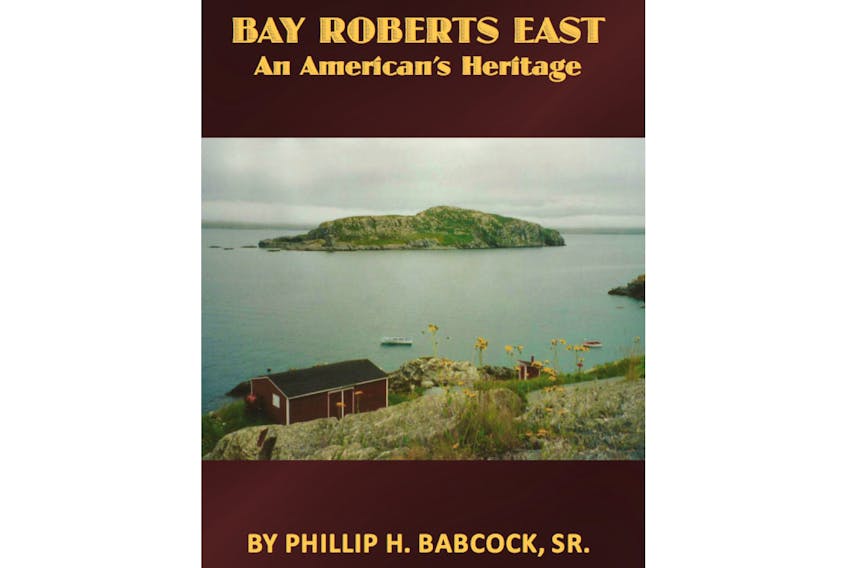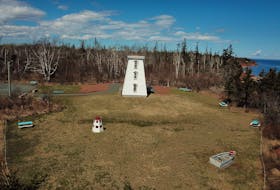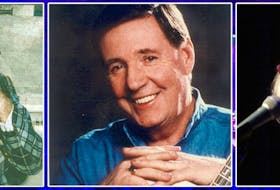
Philip H. Babcock Sr. was born and raised in in Cambridge, Mass., to a family that had left the East End of Bay Roberts for work in the Boston States two generations before. He knew of the Babcocks’ connection to Newfoundland, although some relatives “informed me that there was nothing good to know about” that branch of his linage.
Disheartening news, but not enough to squash Badcock’s curiosity about his ancestors and he literally wrote the book about it. The author, who died in 2013, blended his personal quest into an informative historical and cultural scan of an interesting, long-settled part of the province.
Several chapters, like “Families,” “Religion and Education,” and “Ships and Seafarers,” chronicle documented events. Babcock’s sources include newspapers, library archives, shipping lists, vessel registries, church minutes and burial records. (There’s a five-page bibliography.)
Even with these tools, he needs persistence. For example, depending on where they were from, and where they ended up, Babcocks might evolve into or devolve from Badcocks. Also, it was “not unusual for there to have been more than one individual with the identical first and last names at the same time, as some Badcock lines were unoriginal when it came to first names.” Added to that, sometimes when a child died and a later son or daughter was given the same name as their deceased sibling.
But perhaps Babcock’s strongest element is his employment of oral history, talking not just with older family members but residents of Bay Roberts he met on his visits, and others he meets during his investigations. This opens up into a realm of lore, hoaxes, secrets, and riddles.
For example, “The Churchill Estate,” a supposed (and ever-expanding) fortune in search of its rightful heirs. “During the early 1900s, there were many stories of lost fortunes. This was one where word was spread by newspapers and mouth. Descendants in Vancouver, British Columbia, over 100 in Boston and about 200 in Newfoundland, as well as others, laid claim. These descendants put up money and hired lawyers, some in Newfoundland reportedly putting up their homes, in the quest for a piece of this reputed fortune.” In addition to contextualizing and clarifying the “Estate,” Babcock also devotes the first Appendix to a closer examination, a debunking as intricate and intriguing as the original tale.
Then there are rumoured treasures, including a ring that was unearthed, then disappeared. Apparently it was big enough to encircle three normal fingers. Babcock suggests an explanation for this strange artifact: “In the early days, the custom for those in circus sideshows was to sell memorabilia to circus goers as a way of making extra money. Jack Earle sold, among other things, rings denoting his name as a ‘giant,’ along with his height … Undoubtedly someone bought this ring at a circus on the Canadian mainland; somehow it wound up being buried in the East End.”
He even thinks to include a “Tour” of the area.
Overall, Babcock has produced an entertaining read.
“Faith and Courage in Action: Life Stories of Pastors Claude and Annie Young,” By Burton K. Janes. Bounty Print. $20 322 pages.
Moreover, it is required in stewards, that a man be found faithful.
-1 Corinthians 4:2, King James version
Donald Claude Young was born in 1910 in Wild Bight, Notre Dame Bay, the first child of Elsie and Samuel. The family moved briefly to Grand Falls, then returned to their home community, now called Beachside. He had heard about “mission men” – Pentecostal storefront meeting places being the “missions.” There were stories of talking in tongues, devils being cast out, and healings. In the late 1920, there was a lot of Pentecostal activity centred in Springdale, with lots of people being saved, and the pastors, according to Young’s aunt, “either ‘wonderful good’ or ‘terrible bad.’”
After much interaction with several dynamic figures, Young converted. “His sole ambition in life, from that point on, was to tell family, friends and others about the change Jesus Christ had made in his own life, and could make in anybody’s life.”
Sara Ann “Annie” Murray was born in Victoria, Conception Bay, in 1913, to Isabella and Absalom. By her late teens she was determined to take up the ministry.
They met in Beachside in 1932 and married in Corner Brook in 1935. They would have 12 children. Together they brought the word along the Labrador coast, by boat, and different
Drawn from interviews with the Youngs, contemporary letters to family, friends, and officials, talking with other family members, vessel logbooks, as well as broader ranging research to structure a history of the Pentecostal Assemblies in Newfoundland and Labrador, from meetings to gospel lyrics to sketches of characters like Eugene Vaters, the book also includes a “Pictorial Section.”
Appendices include family tributes and a brief history of D. C. Young Pentecostal School in Port Hope Simpson.
Joan Sullivan is editor of Newfoundland Quarterly magazine. She reviews both fiction and non-fiction for The Telegram.
Previous column:









